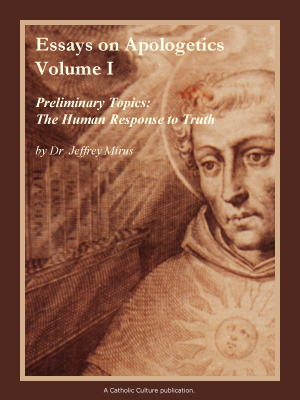Catechism of the Catholic Church
1293 In treating the rite of Confirmation, it is fitting to consider the sign of anointing and what it signifies and imprints: a spiritual seal.
Anointing, in Biblical and other ancient symbolism, is rich in meaning: oil is a sign of abundance and joy; 103 it cleanses (anointing before and after a bath) and limbers (the anointing of athletes and wrestlers); oil is a sign of healing, since it is soothing to bruises and wounds; 104 and it makes radiant with beauty, health, and strength.
1294 Anointing with oil has all these meanings in the sacramental life. The pre- baptismal anointing with the oil of catechumens signifies cleansing and strengthening; the anointing of the sick expresses healing and comfort. The post- baptismal anointing with sacred chrism in Confirmation and ordination is the sign of consecration. By Confirmation Christians, that is, those who are anointed, share more completely in the mission of Jesus Christ and the fullness of the Holy Spirit with which he is filled, so that their lives may give off "the aroma of Christ." 105
1295 By this anointing the confirmand receives the "mark," the seal of the Holy Spirit. A seal is a symbol of a person, a sign of personal authority, or ownership of an object. 106 Hence soldiers were marked with their leader's seal and slaves with their master's. A seal authenticates a juridical act or document and occasionally makes it secret. 107
1296 Christ himself declared that he was marked with his Father's seal. 108 Christians are also marked with a seal: "It is God who establishes us with you in Christ and has commissioned us; he has put his seal on us and given us his Spirit in our hearts as a guarantee." 109 This seal of the Holy Spirit marks our total belonging to Christ, our enrollment in his service for ever, as well as the promise of divine protection in the great eschatological trial. 110
1297 The consecration of the sacred chrism is an important action that precedes the celebration of Confirmation, but is in a certain way a part of it. It is the bishop who, in the course of the Chrism Mass of Holy Thursday, consecrates the sacred chrism for his whole diocese. In some Eastern Churches this consecration is even reserved to the patriarch:
The liturgy of Antioch expresses the epiclesis for the consecration of the sacred chrism (myron) in this way: "[Father . . . send your Holy Spirit] on us and on this oil which is before us and consecrate it, so that it may be for all who are anointed and marked with it holy myron, priestly myron, royal myron, anointing with gladness, clothing with light, a cloak of salvation, a spiritual gift, the sanctification of souls and bodies, imperishable happiness, the indelible seal, a buckler of faith, and a fearsome helmet against all the works of the adversary."
1298 When Confirmation is celebrated separately from Baptism, as is the case in the Roman Rite, the Liturgy of Confirmation begins with the renewal of baptismal promises and the profession of faith by the confirmands. This clearly shows that Confirmation follows Baptism. 111 When adults are baptized, they immediately receive Confirmation and participate in the Eucharist. 112
1299 In the Roman Rite the bishop extends his hands over the whole group of the confirmands. Since the time of the apostles this gesture has signified the gift of the Spirit. The bishop invokes the outpouring of the Spirit in these words:
All-powerful God, Father of our Lord Jesus Christ,
by water and the Holy Spirit
you freed your sons and daughters from sin
and gave them new life.
Send your Holy Spirit upon them
to be their helper and guide.
Give them the spirit of wisdom and understanding,
the spirit of right judgment and courage,
the spirit of knowledge and reverence.
Fill them with the spirit of wonder and awe in your presence.
We ask this through Christ our Lord. 113
1300 The essential rite of the sacrament follows. In the Latin rite, "the sacrament of Confirmation is conferred through the anointing with chrism on the forehead, which is done by the laying on of the hand, and through the words: 'Accipe signaculum doni Spiritus Sancti' [Be sealed with the Gift of the Holy Spirit.]." 114 In the Eastern Churches of Byzantine rite, after a prayer of epiclesis the more significant parts of the body are anointed with myron: forehead, eyes, nose, ears, lips, breast, back, hands, and feet. Each anointing is accompanied by the formula: [Greek text here] (Signaculum doni Spiritus Sancti): "the seal of the gift of the Holy Spirit." 115
1301 The sign of peace that concludes the rite of the sacrament signifies and demonstrates ecclesial communion with the bishop and with all the faithful. 116
Notes:
English Translation of the Cathechism of the Catholic Church for the United States of America © 1997, United States Catholic Conference, Inc.






